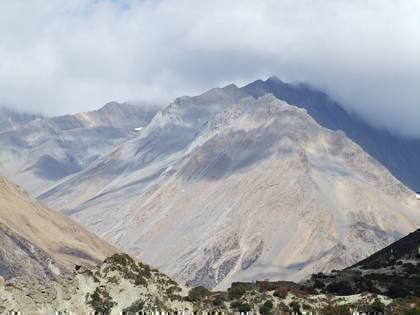
Unraveling the Ravages: Understanding and Addressing Natural Disasters in Himalayan Mountain Regions
Introduction:
The picturesque beauty of the Himalayan mountain regions in India, encompassing states like Uttarakhand and Himachal Pradesh, often belies the increasing frequency of natural disasters that have been wreaking havoc in recent years. From devastating landslides to catastrophic cloud bursts and the alarming collapse of buildings, these areas have been grappling with a mounting crisis that demands urgent attention. This article delves into the alarming trends of these disasters, their scientific underpinnings, and potential remedial measures to mitigate their impact.
Trends of Disasters:
Over the past decade, the Himalayan mountain regions have witnessed a disturbing rise in the occurrence of landslides, cloud bursts, high-intensity rainfall events, and the collapse of buildings. These events have led to loss of life, displacement of communities, and extensive damage to infrastructure.

Nainital lake Uttarakhand India ( Image by A. Kumar Pixabay)
Scientific Explanation:
1. Landslides: The steep terrain, fragile geological formations, and heavy monsoon rains contribute to landslides. The weakening of soil due to constant erosion makes slopes susceptible to sudden collapses, causing massive cascades of debris.
2. Cloud Bursts: Cloud bursts occur when a significant amount of rainfall is concentrated in a short span of time. The Himalayan region's rugged topography, with its complex valleys and narrow gorges, accelerates the flow of water, leading to flash floods.
3. High-Intensity Rain: The proximity of the Himalayas to the Indian Ocean leads to the 'Indian Ocean Dipole' phenomenon, causing variations in sea surface temperatures. This, in turn, affects the monsoon patterns, resulting in episodes of intense rainfall.
4. Building Collapses: Poor construction practices, rapid urbanization, and lack of adherence to building codes render structures vulnerable to seismic events triggered by the region's tectonic activity.
Remedial Aspects:
1. Early Warning Systems: Implementing sophisticated monitoring systems for landslides, rainfall, and weather patterns can provide early alerts, allowing communities to evacuate in time.
2. Afforestation and Soil Stabilization: Reforestation efforts can enhance soil stability and reduce the risk of landslides. Additionally, terracing and building retaining walls can help prevent soil erosion.
3. Urban Planning and Building Codes: Strict enforcement of building codes that consider seismic activity is crucial. Retrofitting and using earthquake-resistant construction techniques can mitigate building collapses.
4. Disaster Preparedness: Conducting regular drills, educating communities about evacuation protocols, and establishing community-based disaster management committees can enhance preparedness.
5. Infrastructure Development: Constructing resilient infrastructure, such as robust roads, bridges, and drainage systems, can minimize the impact of disasters.
6. Research and Data Sharing: Collaborative research efforts and data sharing among scientific institutions can lead to a deeper understanding of the region's unique challenges and inform effective disaster management strategies.
In conclusion, the Himalayan mountain regions face a compounding challenge of frequent landslides, cloud bursts, high-intensity rainfall, and building collapses. These disasters are driven by the region's geology and climatic factors. Addressing these challenges requires a comprehensive approach that integrates scientific research, community engagement, and well-planned mitigation strategies. By prioritizing sustainable development and disaster preparedness, these areas can safeguard both their natural beauty and the lives of their inhabitants.
..... .... Login with Google and support us
Thanks


 Dr Deepak Kumar Pandey
Dr Deepak Kumar Pandey
